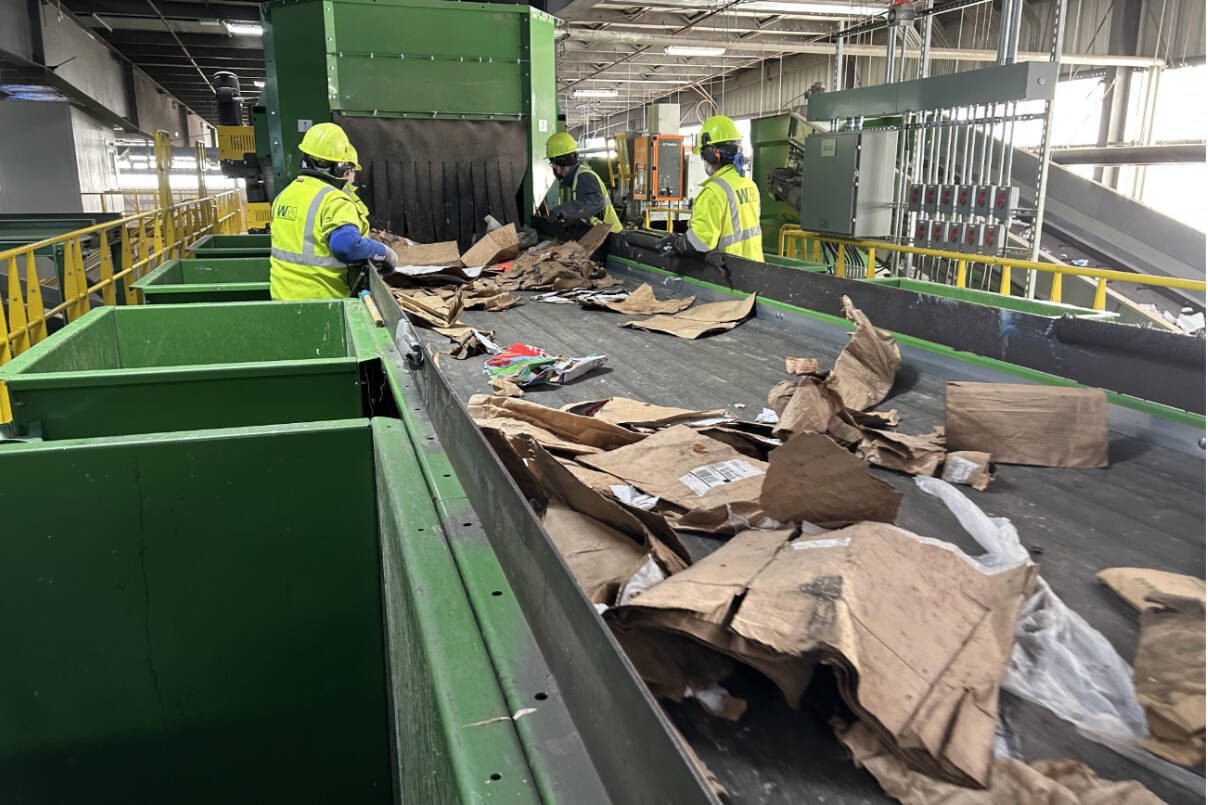By The Herald Editorial Board
Perhaps fittingly, state lawmakers are recycling proposals if not actual legislation from last year as they address how to encourage the recycling of more packaging and reduce the amount of waste that goes into landfills.
Washington state has a decent rate of recycling, returning about 50 percent of packaging and other material — compared to a national average of about 32 percent — thanks to services that provide curbside recycling to about 87 percent of residents and more than 100 collection sites across the state for those without that service. And that curbside service is relatively affordable, about $8 to $10 a month.
But the state’s recycling rate has been stuck around 50 percent for years, and recycling itself is facing old challenges, including persistent confusion over which plastics are recyclable — just because you see the famous triangular arrows on the bottom of a plastic jug, doesn’t mean it can be easily recycled or even accepted — and changes in the markets for some material, particularly glass. Slumping demand for glass in the state has brought on the closure of some glass processing facilities, halting glass collection for some state residents.
Each of three pieces of legislation and companion bills propose different approaches to improving the rate of recycling and reducing the amount of packaging that is more difficult to recycle. Among the legislation:
House Bill 1071 would have the state Department of Ecology complete an assessment of the recycling of paper products and packaging and publish an updated list of what can be recycled; update state rules for the amount of recycled material in packaging — post-consumer content — with new rules for plastic packaging; and requires packaging producers to register with Ecology and report their sale and distribution of certain packaging products.
House Bill 1150 (and Senate Bill 5284) would seek to reduce unnecessary and hard-to-recycle packaging through “extended producer responsibility,” requiring manufacturers to join a statewide “producer responsibility organization,” charging those producers fees to support the program. If, by 2029, producers wern’t part of the program, their products could not be sold in the state. It also calls for a needs assessment by the Ecology Department.
Senate Bill 5502 (and House Bill 1607) — “bottle bills” would add a 10-cent deposit to the sale of beverage containers; to get the deposit back, customers — or diligent container collectors — could return the bottles to stores or to dropoff sites, a system currently in use in Oregon and California. It also would be administered by a producer responsibility organization.
While such a program might seem to incentivize return of glass and plastic bottles and metal beverage cans up to one gallon, the legislation would duplicate a collection system already in place with curbside and dropoff recycling and doesn’t address the other needs and other packaging addressed by the approaches above.
Lawmakers should focus attention on the two House bills — HB 1071 and HB 1150 — or even look to harmonize the advantages that each offers.
Such an effort might start with the bills’ requirements for a needs assessment by the Ecology Department. HB 1071, with a goal of increasing recycling to 65 percent statewide, would have the agency track that progress and develop two lists to better advise consumers of what can and can’t be recycled; one of all materials suitable for curbside recycling and a second for dropoff collections, including glass and flexible plastics.
The agency’s study would further assess capacity, costs, gaps in the recycling system, including recycling services and infrastructure for covered packaging and plastics, education and outreach, and collection, transport and processing capacity.
That study also might allow for more time to assess the pros and cons of extended producer responsibility. The practice isn’t used in any state currently, although several states are considering such programs.
It has been in use for several years in British Columbia, where it has increased the return of containers from 10.3 billion in 2009, to 26 billion in 2023, but there’s less evidence that it has encouraged producers to change packaging to containers that are more easily recyclable. Likewise, a producer responsibility program in France, in effect for 22 years, hasn’t resulted in a significant change in the types of packaging on store shelves, according to a 2023 report.
One advantage in HB 1071 is its focus on requiring more recycled content in packaging, actually helping build a sustainable market for recycled material. For example, the legislation sets percentages by certain dates for how much recycled content must be used in polypropylene tubs, single-use plastic cups and PETE plastic containers, commonly used for beverages and food.
Just about any trip to a grocery store or big box store for all manner or consumer products results in a heap of plastic and other packaging, much of which really shouldn’t go in recycling bins, resulting in “wish-cycling” that increases the costs of collection and ends up in landfills anyway. Those creating packaging and using that packaging to sell their wares should be discouraged from sticking with hard-to-recycle materials and packaging and encouraged to find new methods and material that reduce the amount of packaging or are fully recyclable or even compostable.
A recycling rate of 50 percent is a plastic cup half-empty of effort and half-full of waste.
Talk to us
> Give us your news tips.
> Send us a letter to the editor.
> More Herald contact information.

























